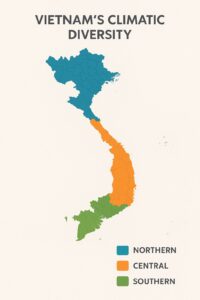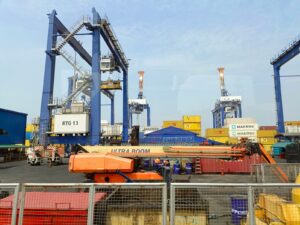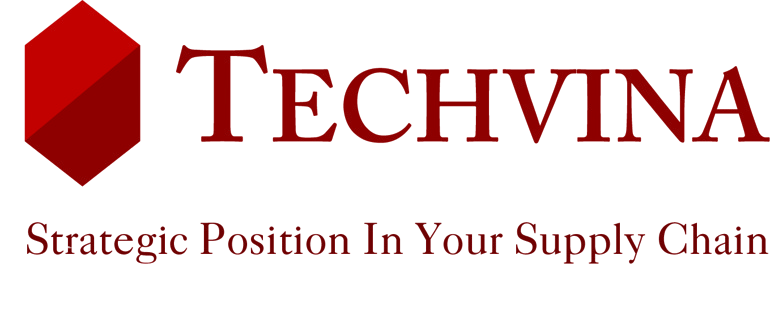Vietnam has emerged as a significant player in the global essential oils market, offering a diverse range of high-quality, natural products. For international buyers, understanding the nuances of importing from Vietnam is crucial. This guide provides insights into market demand, supplier selection, import procedures, and logistics to facilitate a smooth importing experience.
1. Global Demand for Vietnamese Essential Oils
1.1. The Appeal of Vietnamese Essential Oils
Vietnam’s rich biodiversity and favorable climate contribute to the production of various essential oils, including cinnamon, star anise, lemongrass, basil, and citronella. These oils are renowned for their purity and potency, making them highly sought after in international markets.

1.2. Key Markets Showing Strong Demand
- United States: Major importer of cinnamon and star anise oils for cosmetics, food flavoring, and natural medicine.
- European Union: Countries like Germany, France, and the Netherlands prefer certified organic oils with traceable sourcing.
- India & Middle East: High demand for traditional and natural oils used in perfumery, incense, and wellness practices.
1.3. Why Do Global Buyers Prefer Vietnamese Suppliers?
- Competitive pricing compared to other countries.
- Availability of international certifications such as ISO, USDA Organic, and EU Organic.
- Flexible trade policies and efficient production cycles.
2. Understanding the Import Process from Vietnam
2.1. Regulatory Requirements
While Vietnam does not mandate a special export license, businesses must register with the Department of Planning and Investment (DPI). Exporters often adhere to international standards like ISO and HACCP to ensure product quality.
2.2. Essential Documentation and Customs
Key documents include:
Key documents include:
- Commercial Invoice
This is a legally binding document between the exporter and importer. It includes details such as the description of goods (e.g., “Cinnamon Essential Oil – Steam Distilled”), quantity, unit price, total price, HS code (typically under HS 3301), payment terms, and the names of buyer and seller. It serves as the basis for assessing import duties and taxes. - Packing List
Lists how the shipment is packed: number of boxes, type of containers, net weight, gross weight, and volume. It helps customs officials verify the shipment contents against the invoice. - Bill of Lading (B/L)
Issued by the shipping company, this document serves as proof of shipment and ownership of goods. It includes information such as departure and destination ports, name of the consignee, vessel name, and tracking number. For air shipments, an Air Waybill (AWB) will be used instead. - Certificate of Origin (C/O)
Issued by the Vietnam Chamber of Commerce and Industry (VCCI) or authorized agencies, this certificate proves the goods originated in Vietnam. It’s essential for benefiting from preferential tariffs under agreements like the EU-Vietnam Free Trade Agreement (EVFTA) or CPTPP.
Accurate documentation is vital for smooth customs clearance.
2.3. Duties, Tariffs, and Trade Agreements
Import duties vary by country and may be reduced under trade agreements. For instance, the EU–Vietnam Free Trade Agreement (EVFTA) offers tariff reductions for many essential oil products entering the EU.
3. Selecting Reliable Vietnamese Suppliers
3.1. Identifying Reputable Manufacturers
Vietnam boasts over 1,000 essential oil exporters, including notable companies like Techvina, Phuc Linh, and Calofic. Platforms like Volza provide export performance data to help identify reliable suppliers.

3.2. Evaluating Supplier Credentials
To import essential oils from Vietnam successfully, always verify your supplier’s credentials.
- Look for certifications: ISO 9001, GMP, USDA Organic, EU Organic—these show the supplier meets international quality and safety standards.
- Request product samples: Test oils for purity via third-party labs using GC-MS or COA reports.
- Check consistency: Ensure each batch meets agreed specifications.
Techvina offers full certification and quality reports on cinnamon and lemongrass oils. >> See more: techvina.com/certifications
3.3. Building Strong Partnerships
Clear agreements and communication help prevent costly mistakes.
- Define product specs, packaging, delivery time, and payment terms in writing.
- Conduct factory visits or hire inspection services (e.g., SGS, Intertek) to confirm quality control.
- Maintain ongoing contact to build trust and adapt to seasonal supply shifts.
4. Logistics and Shipping Considerations
4.1. Transportation Options
- Sea Freight: Suitable for large shipments; major ports include Ho Chi Minh City and Hai Phong.
- Air Freight: Ideal for smaller, time-sensitive shipments.

4.2. Packaging and Labeling Compliance
- Use certified export-grade packaging to maintain oil quality during transit.
- Labels should include product details, batch numbers, and necessary warnings.
4.3. Insurance and Risk Management
- Obtain cargo insurance to protect against potential damages or losses.
- Collaborate with freight forwarders experienced in handling essential oil logistics.
5. Tips for First-Time Importers
Entering the essential oil import market for the first time can be rewarding but also risky without the right preparation. Here are practical tips to help new buyers import essential oils from Vietnam smoothly and successfully.
5.1. Start with Small Orders
Don’t commit to bulk orders immediately—even if pricing is attractive.
- Begin with a trial shipment to assess product quality, supplier communication, and delivery reliability.
- Use this first batch to test market reception, packaging durability, and scent consistency.
- Scale gradually once the supplier proves dependable.
5.2. Stay Informed
Global trade conditions shift constantly—especially for natural products like essential oils.
- Track changes in tariff rates, organic certification laws, and product labeling regulations in your country.
- Monitor Vietnamese harvest seasons (e.g., cinnamon harvest peaks from September to November) to plan purchases ahead.
- Subscribe to trade sources like Techvina for updated market insights.
5.3. Leverage Professional Services
Importing essential oils involves complex logistics, paperwork, and quality controls.
- Work with sourcing agents who can recommend certified suppliers and handle negotiations.
- Hire an import/export consultant to manage HS codes, customs clearance, and shipping documents.
- Consider freight forwarders experienced in shipping essential oils (hazard class products may need special handling).
6. Conclusion:
Vietnam’s essential oil industry is growing rapidly, backed by rich natural resources, cost-effective production, and increasing global demand. Whether you’re sourcing cinnamon oil from Yen Bai or citronella from the Mekong Delta, Vietnam offers a wide range of high-quality, natural essential oils that meet international standards.
For first-time importers, Vietnam presents an ideal entry point—if you understand the process, choose the right suppliers, and stay ahead of logistics and documentation requirements. With support from reliable partners like Techvina, third-party quality services, and trade-friendly policies like the EVFTA, importing essential oils from Vietnam has never been more accessible.
